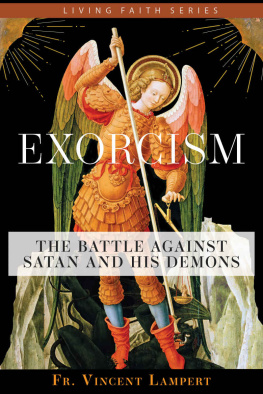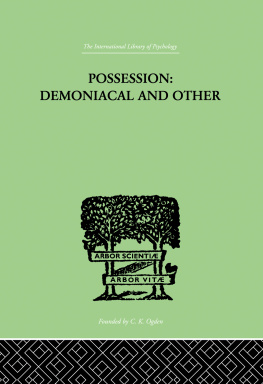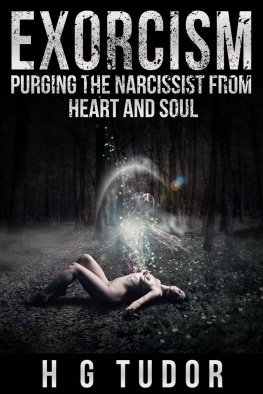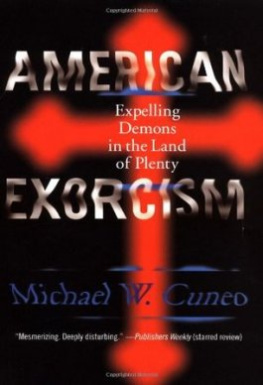Abbreviations
ADHD Attention deficit/hyperactivity disorder
ADP Adrenal dysfunction psychosis
CNS Central nervous system
DSMMD Diagnostic and Statistical Manual of Mental Disorders
EEG Electroencephalogram
EPA Extraphysiological ability
IREF model Investigate, review, exorcise, and follow up
RCCNA Reformed Catholic Church of North America.
PTSD Post-traumatic stress disorder
OCD Obsessive compulsive disorder
TBI Traumatic brain injury
UPA Ultraphysical ability
Part 1
Historical Information Regarding Anneliese Michel
Mans insanity is heavens sense.
Herman Melville, Moby Dick
The Life of Anneliese Michel
1.1 Childhood
T he infant Anneliese Michel was born to Anna and Josef Michel on September , 1952 , in Leiblfing, Germany. All who viewed her agreed that she was a very beautiful and healthy girl, and the parents were indeed proud. Baby Anneliese was christened into the Roman Catholic faith in accordance with the local Bavarian customs of the time.
Anneliese was one of several daughters born to Anna and Josef Michel. Her older sister, Martha Michel, died at the age of eight due to complications related to kidney disease. Anneliese was then one of the oldest children living in the house, and her mother expected a great deal more than she may have been able to cope with.
Annelieses father, Josef Michel, was a veteran of World War II and barely managed to survive fighting for the German army on the Eastern front. He fought his way westward in order to surrender to United States and British forces and would often tell young Anneliese stories about his experiences in the war. One story involved his marching in the snow without boots and then finding a pair of Russian boots in the snow after praying for Gods help. This story was one of Annelieses favorites, and she would often ask her father to retell it.
Joseph Michel has been described as nice and caring toward his children but also of being emotionally vacant and out of touch with his emotions. This may have been the result of having survived a very bloody and brutal war. It was quite common for veterans of World War II to be emotionally vacant and hard. In all accounts he seemed to care a lot about his daughters but lacked an ability to effectively show it or emotionally nurture them.
Annelieses mother, Anna Michel, was an extremely religious and strict parent. Both Anneliese and her sisters described Anna as being a suffocating and overbearing mother. Anneliese and her sisters were controlled in almost every aspect of their lives. They were strictly forbidden to interact with members of the opposite sex and would not even be allowed to go to a female friends house if that female friend had a brother. None of the children were allowed to develop individually or to interact in social environments that would have allowed them to develop healthy adaptation and coping mechanisms in times of stress and disruptive change. The girls werent even allowed to go dancing at special school events.
What was to be worn, what was to be read, what was to be discussed, and manners of behavior were strictly dictated by both of Annelieses parents. Punishments for emoting or expressing feelings that were contrary to the strict and quite unreasonable standards of the family were harsh. Normal developmental interests in issues of sex and sexuality were suppressed, and those who expressed curiosity or developmental interests were quickly scorned and told not to do or speak of things that would make them look promiscuous. All of the children were expected to sacrifice their own emotional health and individuality for the primary benefit of their mother, Anna Michel.
Later, Anneliese would meet with a psychotherapist named Dr. Lenner who saw the young girl as having a classic case of neurosis, which was rooted in her dysfunctional family life. Dr. Lenner noted that Annelieses neurosis slowly manifested itself from having a father who didnt understand her and a mother for whom she had intense hatred. The suspected use of holy objects and prayers as punishments and control mechanisms certainly can be seen as contributing factors for Annelieses later development of contempt for any Catholic icon or practice.
In 1965 , at the age of thirteen, young Anneliese was enrolled at the Dalberg-Gymnasium in Aschaffenburg, Germany. She was excited and liked taking the train into Aschaffenburg from her home in Klingenberg each day. Perhaps it offered her a bit of cherished freedom from her mother and the house. She was a very good student and excelled in her studies, especially Latin. Up until then she was a very happy, engaging, and playful person. She was healthy and enjoyed athletics. But, this was soon to change drastically when she experienced her first of many symptoms that would come to be medically identified as epileptic seizures and spiritually misidentified as demonic possession.
1.2 History of Symptoms
Anneliese was sixteen years old and had just started her 1968 school year when she blacked out for a moment during class. She appeared to be in some sort of trancelike state to her friends sitting next to her. They all asked her if she was OK, and she stated that she was fine and was probably tired from all of her studying. She really had no idea what had just happened to her.
That night, sometime around midnight, Anneliese awoke suddenly. She experienced a sensation of something heavy pressing down on her combined with a sort of paralysis that rendered her unable to move or yell for help. She struggled desperately to breath. The terrified girl lost bladder control and felt warm urine running across her legs. The episode didnt last very long and ended as quickly as it started. She quickly got up, cleaned herself and changed the bedding. She didnt awaken her parents right then but did discuss the matter with her mother the next morning. The experience was absolutely terrifying to her.
After this event, everything seemed to return to normal for Anneliese Michel. She began to learn how to play tennis, and final examinations were approaching. As with any other normal teenage girl, she worried about school, interacted with her classmates, and spoke about boys with the other girls. She did not have any other experiences until August of 1969 .
Almost a year after her first episode, Anneliese again experienced the strange blackout in class. That, like the first incident, was followed by a late night awakening with the sensation of something heavy pressing down on her. She also experienced the strange paralysis and uncontrolled urination. As with the first incident, these symptoms came and went very quickly. Again, she changed herself and the bedding and waited until morning to tell her mother about the problem she had.
Since this was the second time that Anneliese had experienced such an episode, her mother decided that it was time to take her to the family physician there in Klingenberg. Dr. Vogt performed an examination and listened to the girl describe her experiences. Based on what he heard, Anneliese was referred to a neurologist in Aschaffenburg named Dr. Siegfried Lthy. Annelieses mother overreacted and asked repeatedly as to what could be wrong with her Anneliese that would require a nerve doctor. She insisted that Anneliese not say a word to anyone about her being referred to a nerve doctor, as there would be gossip. Anna Michel was worried more of what the people in town and at church would think than what was truly ailing her daughter.
Dr. Lthy asked a number of questions, performed a physical examination, and ran a battery of tests. The results of his observations and tests indicated that there was nothing neurologically wrong with Anneliese. However, he did make an appointment with Anneliese for August , 1969 , in order to perform an electroencephalogram (EEG). The results of this examination also indicated normal brainwave activity.











